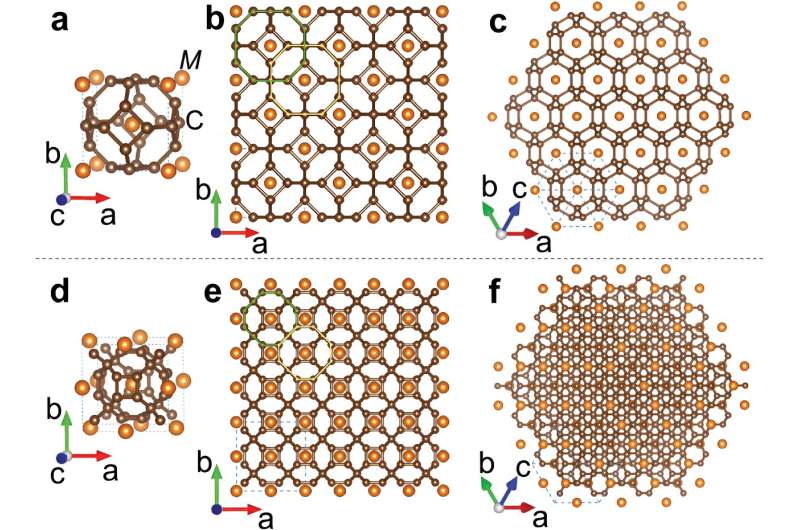This article has been reviewed according to Science X's editorial process and policies. Editors have highlighted the following attributes while ensuring the content's credibility:
fact-checked
peer-reviewed publication
trusted source
proofread
Researchers advance high-temperature superconductivity in carbon materials

In a study published in Advanced Science, researchers led by Prof. Zhong Guohua from the Shenzhen Institute of Advanced Technology (SIAT) of the Chinese Academy of Sciences (CAS) have made a prediction regarding superconductivity above 100 K within carbon-cage networks.
By utilizing first-principles calculations, they crafted carbides with the structural characteristics of carbon-cage networks, achieving robust electron-phonon coupling and surpassing the superconducting transition temperatures of conventional carbides like diamond, graphene, carbon nanotubes, and fullerene.
Recently, there has been a surge of interest in superconductivity within lightweight elemental compounds, particularly in the context of ambient-pressure high-temperature superconductivity. Carbon materials, as representative lightweight elemental compounds, are deemed the cornerstone of future materials.
Although superconductivity has been detected in certain carbon-based materials including diamond, graphene, carbon nanotubes, and fullerene, the superconducting transition temperatures (Tc) remain below the critical point of 77 K, the boiling point of liquid nitrogen.
To explore the development of carbon material superconductors with elevated Tc, researchers devised two novel carbon structures featuring cage-like networks. They meticulously investigated their superconductivity by introducing metal dopants. These cage units, C24 and C32, are interconnected through shared surfaces to create crystal structures.
High-throughput calculations have anticipated that these cage-like network structures can exhibit high-temperature superconductivity under ambient pressure when doped with metals. Notably, C24 cage network crystals doped with Na, Mg, Al, In, and Tl metals demonstrated high-temperature superconductivity surpassing 100 K. This not only outperformed the Tc of common carbon materials such as diamond, graphene, carbon nanotubes, and fullerene but also greatly exceeded the boiling point of liquid nitrogen.
Additionally, researchers unveiled that the coupling of cage structures plays a pivotal role, resulting in stronger electron-phonon interactions compared to other carbon materials and leading to higher Tc. They found that the superconductivity of carbides with cage networks is heavily dependent on the electronegativity and doping concentration of the introduced metals. Weaker electronegativity and higher doping concentration tend to yield higher Tc values.
"Our findings provide a promising way for the development of high-Tc superconductors. We anticipate that this work will inspire experimental and theoretical investigations into high-temperature superconductors based on carbides," said Prof. Zhong.
More information: Yu‐Long Hai et al, Superconductivity Above 100 K Predicted in Carbon‐Cage Network, Advanced Science (2023). DOI: 10.1002/advs.202303639
Journal information: Advanced Science
Provided by Chinese Academy of Sciences





















